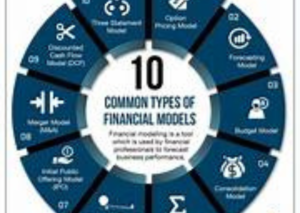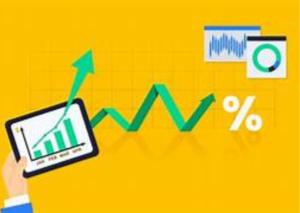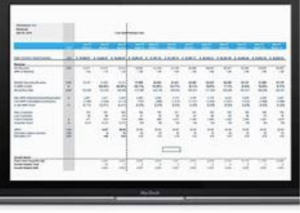What is a Startup Financial Model?
 A startup financial model helps track and project a company’scompany’s financial health. Many economic models include three common elements:
A startup financial model helps track and project a company’scompany’s financial health. Many economic models include three common elements:
• A profit and loss statement
• An income statement
• A cash flow statement
• A balance sheet
Startup financial models are often part of a company’s business plan. They can be used to identify startup costs, key performance indicators (KPIs), and ongoing expenses while projecting future revenues.
Why is Building a Financial Model Important for Startups?
Most startups will fail. Ninety percent of startups fail, often because of high burn rates, poor budgeting, and other issues with cash flow. Startups can also fail because of a poorly prepared business plan that doesn’t address important factors like market demand, competition, product pricing, and long-term costs.
Startups can use a financial model to:
Track Goals
Whether you want to reach a certain number of sales in your first year of business, hire new employees, or improve current KPI measurements by next year, a financial model will help. This tool allows you to take a more detailed look at the business finances to determine strengths and weaknesses while estimating future economic performance. With a financial model, you can adjust the business as needed to help the startup meet its goals.
 Keep a Budget
Keep a Budget
Startups may use their financial models to maintain budgets by tracking actual and anticipated expenses and revenues. About 53% of startups underestimate business costs in their first year, so preparing a financial model can help startups better understand their costs and keep spending in check to avoid poor cash flow.
Attract Investors
Financial models aren’t just beneficial—they may be required, especially if you’re pursuing startup financing. Potential investors or lenders will need to see how your business is doing financially or, if it’s not running yet, how it is likely to do based on your extensive research.
Prepare for the Future
Creating a startup financial model can also be part of a business’s due diligence. Startups need to understand their financial performance and estimate their future financial standing to hire people at fair rates and avoid running out of money.
 How to Create a Financial Model
How to Create a Financial Model
Financial modeling is essential for startups, whether they are just starting a new business or are rapidly growing and need to plan for the future.
But where do you begin with financial modeling? While the process can vary based on the business type, size, and goals, startups can create an economic model with the following key steps.
1. Set Goals for the Model
Because a financial model can serve many purposes, knowing your “why” for creating it is essential. For instance, if your financial model will primarily serve as a budget and business plan for the company, it should be highly detailed to help track expenses, project revenue, and plan for the future.
2. Establish a Model Framework
If someone on the startup team is particularly savvy with spreadsheets, you can create your financial model. You’ll need to input the KPIs you plan to measure for the economic model and the goals you will work toward to generate the spreadsheet. Otherwise, you can also use templates to build out the bones of your financial model.
3. Input KPIs
Now that you know what you want to track and why, you can pull data from your business to track KPIs. For instance, you may start inputting sales, current expenses, and tax costs. The KPIs are how you will track your financial performance, so it’s essential to have them detailed and accurate here.
The KPIs you want to track will depend on your business, market, and specific goals, but some common KPIs for startups may include average revenue per user, customer churn rate, website traffic, or leads.
4. Estimate Costs
Whether your startup is growing or just getting started, there will be costs you may not be paying for yet but will still need to account for. These estimated costs must be included in a financial model to avoid any costly surprises in the future. For instance, you may be using software for your operations that offered a new client deal for your first year, and that cost will go up in the next year. Or you may need to consider expenses for expanding to a more prominent storefront or warehouse. The more detailed you can estimate future costs, the better you can expect the unexpected.
5. Forecast Revenue
You can begin forecasting revenue by tracking your business’sbusiness’s financial inputs and outputs in the economic model. This can help startups determine sales goals or how many sales they’ll need to make to start turning a profit and examine what expenses can be minimized.
Forecasted revenue can be significant for presenting to investors and setting financial goals for the company, but it can also provide some insight for startup founders. Many startup founders won’t take a salary home from the business in its early stages or until the company begins raising seed funding. So, revenue projections can help determine when startup founders can start paying themselves a salary.
6. Include Working Capital
Working capital is a business with money readily available for daily operations based on the difference between current liabilities and assets. Startups should closely monitor working capital in the financial model since this number can make or break the business. The startup could face bankruptcy if existing liabilities, like expenses and debts, are higher than the company assets.
7. Prep for Taxes
New businesses must consider taxes when preparing the financial model. This variable, ongoing expense, can leave new business owners with sticker shock. Companies need to prepare ahead for taxes, including income taxes, franchise taxes, employment taxes, and corporate taxes, just to name a few. The taxes a business must pay depend on the business type, location, size, and many other factors. Hence, it’s best to consult with accounting professionals to predict tax expenses in the financial model better.
 8. Check In
8. Check In
Creating a financial model is only half the battle. Companies must regularly analyze the model to adjust projections and determine economic performance. Plus, a business’s goals may change over time as it grows.
Startups can also analyze the model to find issues like underperforming sales or unnecessary expenses. By finding problems early, startups can address them and get their finances back on track.
Reviewing and updating the financial model can help the business stay current on its finances. Ideally, this data can be used to secure more funding, reach increasing sales goals, and establish a viable, long-running business.

